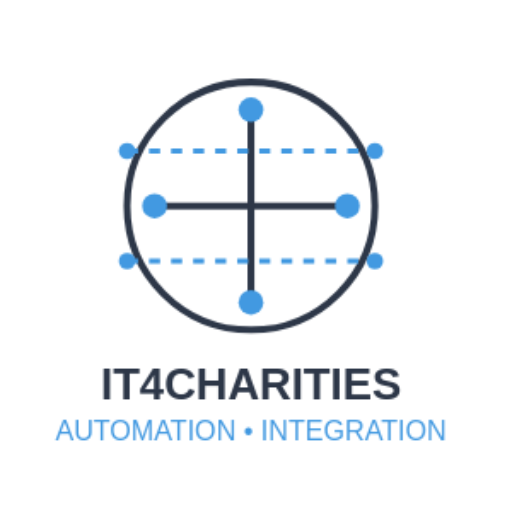Fundraising in the Digital Age: Key Tech Trends for UK Charities
Beyond Traditional Methods: How Digital Innovation is Revolutionizing Charitable Giving
In an era where digital transformation touches every aspect of society, UK charities face both unprecedented challenges and extraordinary opportunities. Those embracing technological innovation are experiencing dramatic improvements in donor engagement, operational efficiency, and ultimately, greater social impact.
The Digital Fundraising Revolution
The charity landscape has fundamentally changed over the past decade. Traditional methods like direct mail and telephone fundraising, while still valuable, are increasingly complemented by sophisticated digital strategies that offer precision targeting and global reach.
Recent data from the Charity Digital Skills Report shows that 71% of UK charities have accelerated their digital strategies since 2020, with organizations reporting an average 37% increase in online donations when implementing comprehensive digital fundraising approaches.
Five Critical Technology Trends Reshaping Charitable Giving
1. Intelligent Digital Fundraising Platforms
Modern fundraising platforms go far beyond simple donation processing. Today’s solutions incorporate machine learning algorithms that analyze donor behavior, predict giving patterns, and automatically personalize communication.
Platforms like JustGiving and GiveWP now offer dynamic dashboards that visualize campaign performance in real-time, allowing charities to make data-driven decisions about resource allocation and messaging adjustments mid-campaign.
2. The Rise of Cryptocurrency and Blockchain Donations
Cryptocurrency donations represent more than just an alternative payment method—they’re opening doors to entirely new donor demographics. The average crypto donor is typically younger (25-40 years old) and donates 82% more than traditional donors, according to Charity Navigator research.
Beyond cryptocurrency itself, blockchain technology offers unprecedented transparency in how donations are used, with some platforms enabling donors to track their contribution from receipt to impact, significantly building trust in the process.
3. Immersive Virtual and Hybrid Events
The pandemic accelerated virtual event adoption, but innovative charities are now creating hybrid experiences that combine the accessibility of digital with the connection of in-person gatherings.
Organizations utilizing immersive technologies report 63% higher engagement rates and a 41% increase in average donation amounts compared to traditional fundraising events. Tools like VR experiences that show donors the direct impact of their contributions are particularly effective at driving emotional connections.
4. AI-Powered Donor Relationship Management
Artificial intelligence is revolutionizing how charities identify, engage, and retain donors. Predictive analytics can now forecast donor churn before it happens, while natural language processing tools analyze communication preferences to craft personalized appeals.
Cancer Research UK implements AI-driven segmentation that has improved donor retention rates by 24% and increased lifetime value of supporters through precisely timed and tailored communications.
5. Contactless and Mobile-First Giving
With 89% of UK adults now owning smartphones, successful charities have embraced mobile-optimized donation processes that remove friction from giving. Contactless donation points in physical locations have shown remarkable effectiveness, with some charities reporting 200% increases in spontaneous donations compared to traditional collection boxes.
Implementation Strategies for Success
Adopting new technologies requires thoughtful planning. Consider these proven approaches:
-
Start with donor experience mapping: Document every touchpoint in the donor journey and identify opportunities for digital enhancement.
-
Adopt a test-and-learn culture: Begin with small pilots before full-scale implementation, measuring outcomes against clear KPIs.
-
Invest in digital skills development: Equip your team with both technical knowledge and digital strategic thinking through targeted training programs.
-
Collaborate across the sector: Partner with tech-forward organizations to share resources, learnings, and potentially costs.
Inspiring Case Studies
Shelter UK transformed its fundraising approach by implementing an integrated CRM system that unified donor data across all channels. The result was a 43% increase in recurring donations and a 27% reduction in acquisition costs within six months.
Médecins Sans Frontières UK pioneered a virtual reality experience allowing potential donors to “visit” field hospitals. This immersive approach led to a 70% conversion rate among experience participants and significantly higher average donations.
British Heart Foundation developed a customized mobile app that gamifies fitness challenges while raising funds. The initiative not only generated substantial new revenue but also promoted heart health among participants, directly advancing their mission.
Looking Forward: Emerging Technologies to Watch
As we look ahead, technologies like augmented reality fundraising experiences, voice-activated giving through smart home devices, and AI-powered chatbots for donor support are showing tremendous promise in early adoption cases.
Conclusion: Digital Transformation as a Mission Imperative
For today’s charities, digital innovation isn’t merely about following trends—it’s about maximizing impact and ensuring sustainability in a rapidly changing world. By thoughtfully implementing these technologies, UK charities can not only survive but thrive in the digital age, ultimately delivering greater good to the communities they serve.
The most successful organizations will be those that view technology not as a separate initiative but as an integral part of their mission delivery strategy.

